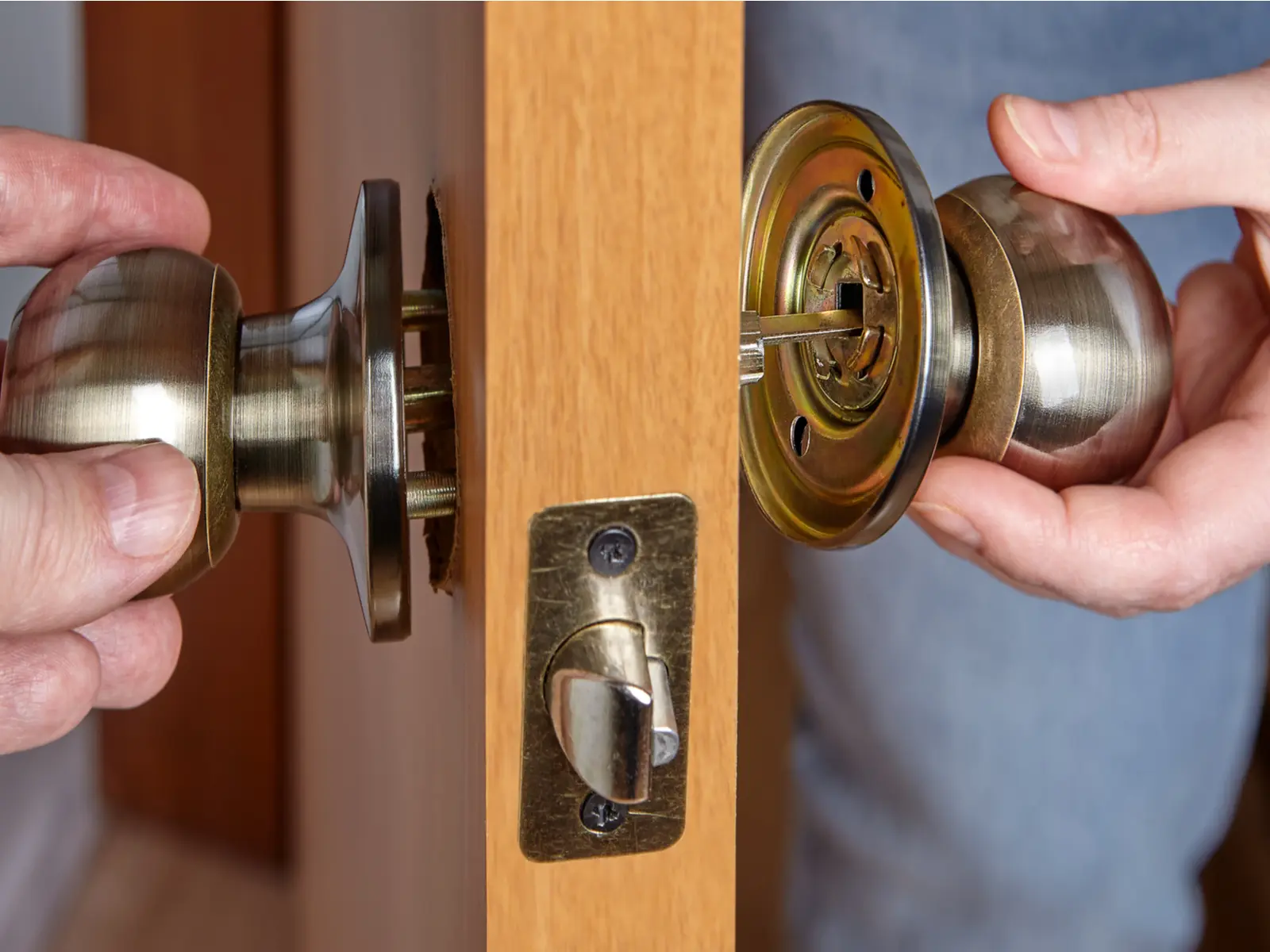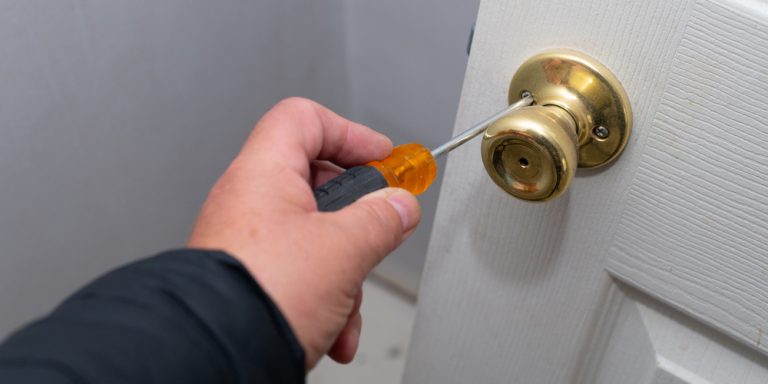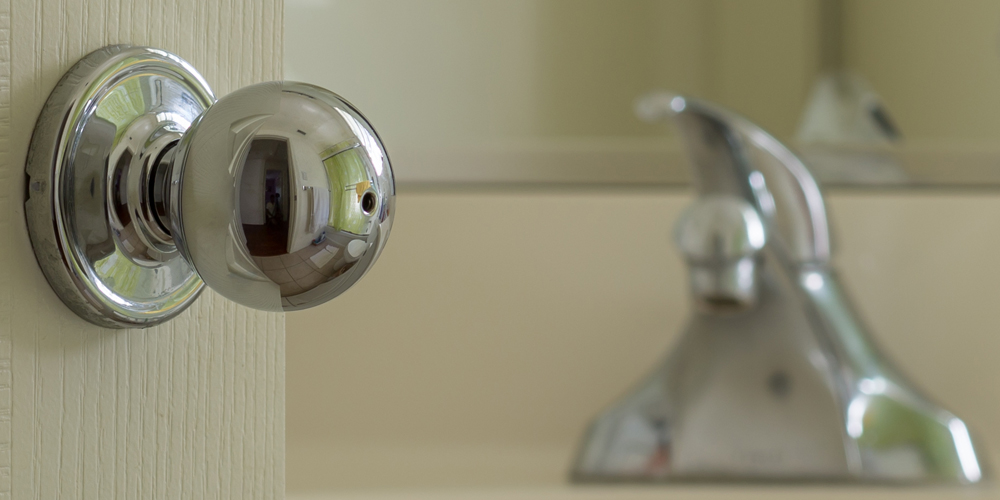Causes of a Locked Bathroom Door Hole

A hole in a locked bathroom door is a concerning issue that can raise questions about safety, privacy, and potential malicious intent. It’s crucial to understand the various reasons behind such a hole to address it effectively and ensure the security of the bathroom.
Potential Dangers of a Locked Bathroom Door Hole
A hole in a locked bathroom door can pose significant dangers, particularly in terms of privacy and security.
- Invasion of Privacy: The presence of a hole allows unauthorized individuals to observe activities within the bathroom, violating privacy and creating a sense of vulnerability. This can be highly distressing and damaging to personal well-being.
- Security Risks: A hole can be exploited for nefarious purposes, such as allowing someone to unlock the door from the outside or even gain entry into the bathroom. This poses a serious threat to personal safety and can lead to potential harm or theft.
Possible Scenarios of a Locked Bathroom Door Hole
The occurrence of a hole in a locked bathroom door can arise from a variety of scenarios, each with its own implications:
- Accidental Damage: In some cases, the hole might be a result of accidental damage, such as a forceful impact from a heavy object or a fall. This scenario is usually evident from the surrounding damage and lack of malicious intent.
- Intentional Damage: A hole in a locked bathroom door can be a deliberate act of vandalism or malicious intent. This could involve a neighbor, an ex-partner, or someone seeking to invade privacy or harm the occupant.
- Past Tenant’s Actions: If the bathroom door is part of a rented property, the hole might have been created by a previous tenant for reasons unknown. It’s important to investigate the history of the property to understand the potential causes.
Types of Holes in a Locked Bathroom Door, Locked bathroom door hole
The type of hole in a locked bathroom door can provide clues about its origin and potential purpose. Here are some common types:
- Small Hole: A small hole, often created with a drill or a sharp object, could be used for observation or to unlock the door from the outside.
- Large Hole: A large hole, potentially caused by a forceful impact, might be intended to gain access to the bathroom or to cause significant damage.
- Multiple Holes: The presence of multiple holes, especially in a pattern, might indicate a deliberate attempt to disable the door’s locking mechanism or to create a way to access the bathroom.
Repairing a Locked Bathroom Door Hole

Repairing a hole in a locked bathroom door can be a challenging task, but it’s achievable with the right approach and tools. Understanding the size and location of the hole is crucial in determining the best repair method. This section provides a step-by-step guide, compares different repair methods, and Artikels a repair strategy based on the hole’s characteristics.
Repair Methods for Holes in a Locked Bathroom Door
Repairing a hole in a locked bathroom door involves filling the void and restoring the door’s surface. Several methods can be employed, each with its advantages and disadvantages.
Wood Filler
Wood filler is a common solution for small holes. It’s easy to apply, dries quickly, and can be sanded smooth for a seamless finish. However, wood filler may not be suitable for larger holes or those located in high-traffic areas, as it can crack or chip over time.
Epoxy Putty
Epoxy putty is a stronger and more durable option than wood filler. It’s ideal for larger holes and can withstand more wear and tear. However, epoxy putty is more difficult to work with and requires more time to cure.
Wood Patch
A wood patch is a piece of wood that is cut to fit the hole and glued in place. This method is ideal for larger holes or those located in areas that experience significant stress. However, wood patches can be more time-consuming to install and may require more skill.
Drywall Patch
Drywall patch is a pre-made patch that is designed to be used on drywall. It’s a quick and easy way to repair holes in drywall, but it may not be suitable for doors made of solid wood.
Repair Strategy Based on Hole Size and Location
The best repair strategy for a hole in a locked bathroom door depends on its size and location.
Small Holes (Less Than 1 Inch)
For small holes, wood filler or epoxy putty can be used. If the hole is in a high-traffic area, epoxy putty is the more durable option.
Medium Holes (1-3 Inches)
For medium holes, a wood patch or epoxy putty can be used. A wood patch is a more permanent solution, but it can be more time-consuming to install.
Large Holes (Greater Than 3 Inches)
For large holes, a wood patch or drywall patch can be used. A wood patch is the more durable option, but it can be more difficult to install.
Materials and Tools for Repairing a Hole in a Locked Bathroom Door
The following materials and tools are needed for repairing a hole in a locked bathroom door:
- Wood filler, epoxy putty, wood patch, or drywall patch
- Wood glue or construction adhesive
- Sandpaper (various grits)
- Putty knife
- Saw or utility knife
- Screwdriver
- Hammer
- Measuring tape
- Level
- Paint or stain (optional)
Preventing Future Holes in a Locked Bathroom Door: Locked Bathroom Door Hole

The most effective way to prevent future holes in a locked bathroom door is to address the root causes of the problem. Understanding why these holes occur is crucial in developing preventive strategies. This section will provide a comprehensive checklist of preventive measures, techniques for securing the door, and common mistakes to avoid.
Identifying and Addressing Common Mistakes
Common mistakes often lead to holes in a locked bathroom door. Understanding these mistakes can help prevent them from recurring.
- Using excessive force: Applying excessive force while opening or closing the door can weaken the door’s structure, leading to cracks and eventually holes. It’s essential to use a gentle approach and avoid forcing the door beyond its natural movement.
- Using inappropriate tools: Attempting to open the door with tools that are not designed for the purpose can damage the lock and door. For instance, using a screwdriver or a credit card to pry open a jammed lock can easily create holes in the door.
- Ignoring signs of wear and tear: Ignoring signs of wear and tear on the door or lock can lead to further damage. If the door or lock is showing signs of weakness, it’s essential to address the issue promptly. This includes lubricating the lock regularly and replacing worn-out parts.
- Improper installation: Improper installation of the door or lock can lead to structural weaknesses and vulnerabilities. Ensuring the door and lock are correctly installed is crucial for preventing future holes.
Preventing Holes with a Comprehensive Checklist
This checklist Artikels key preventive measures to minimize the risk of holes forming in a locked bathroom door:
- Use the correct key: Always use the correct key for the lock. Using the wrong key can damage the lock and potentially create holes in the door.
- Lubricate the lock regularly: Lubricating the lock regularly reduces friction and wear and tear, preventing the lock from jamming and potentially causing damage to the door. Use a lubricant specifically designed for locks and follow the manufacturer’s instructions.
- Handle the door gently: Always handle the door gently, avoiding excessive force when opening or closing it. This prevents stress on the door’s structure, reducing the risk of cracks and holes.
- Avoid using tools to open the door: Never use tools such as screwdrivers or credit cards to pry open a jammed lock. These tools can easily damage the lock and create holes in the door.
- Inspect the door and lock regularly: Regularly inspect the door and lock for signs of wear and tear. This includes checking for loose screws, damaged hinges, or a lock that is becoming difficult to operate. Addressing these issues promptly can prevent further damage.
- Use a doorstop: A doorstop can help prevent the door from slamming shut and potentially damaging the lock or door.
Securing the Locked Bathroom Door for Prevention
Securing the locked bathroom door is essential for preventing future holes. This involves taking steps to ensure the door is strong and resistant to damage.
- Reinforce the door: If the door is weak or thin, consider reinforcing it with a solid backing or additional layers of material. This can improve its resistance to force and reduce the risk of holes.
- Upgrade the lock: If the current lock is outdated or weak, consider upgrading it to a more robust model. This includes locks with reinforced locking mechanisms and strong deadbolts.
- Install a door chain: A door chain provides an additional layer of security and can help prevent the door from being forced open.
Locked bathroom door hole – So you’ve got a hole in your locked bathroom door, huh? It’s probably a little annoying, right? Maybe you’re thinking of a more stylish solution instead of just patching it up. If you’re looking for a rustic, modern touch, you might consider barnyard doors for your bathroom.
They can be a real eye-catcher, and you could even use a cool sliding door system to cover up that hole! Whatever you choose, make sure it fits your style and solves that pesky door problem.
Got a locked bathroom door with a hole in it? You might have a busted latch, which happens more often than you’d think. Luckily, replacing the bathroom stall door latch hardware is usually a pretty easy fix. Just make sure you get the right kind for your door and you’ll be back in business in no time!